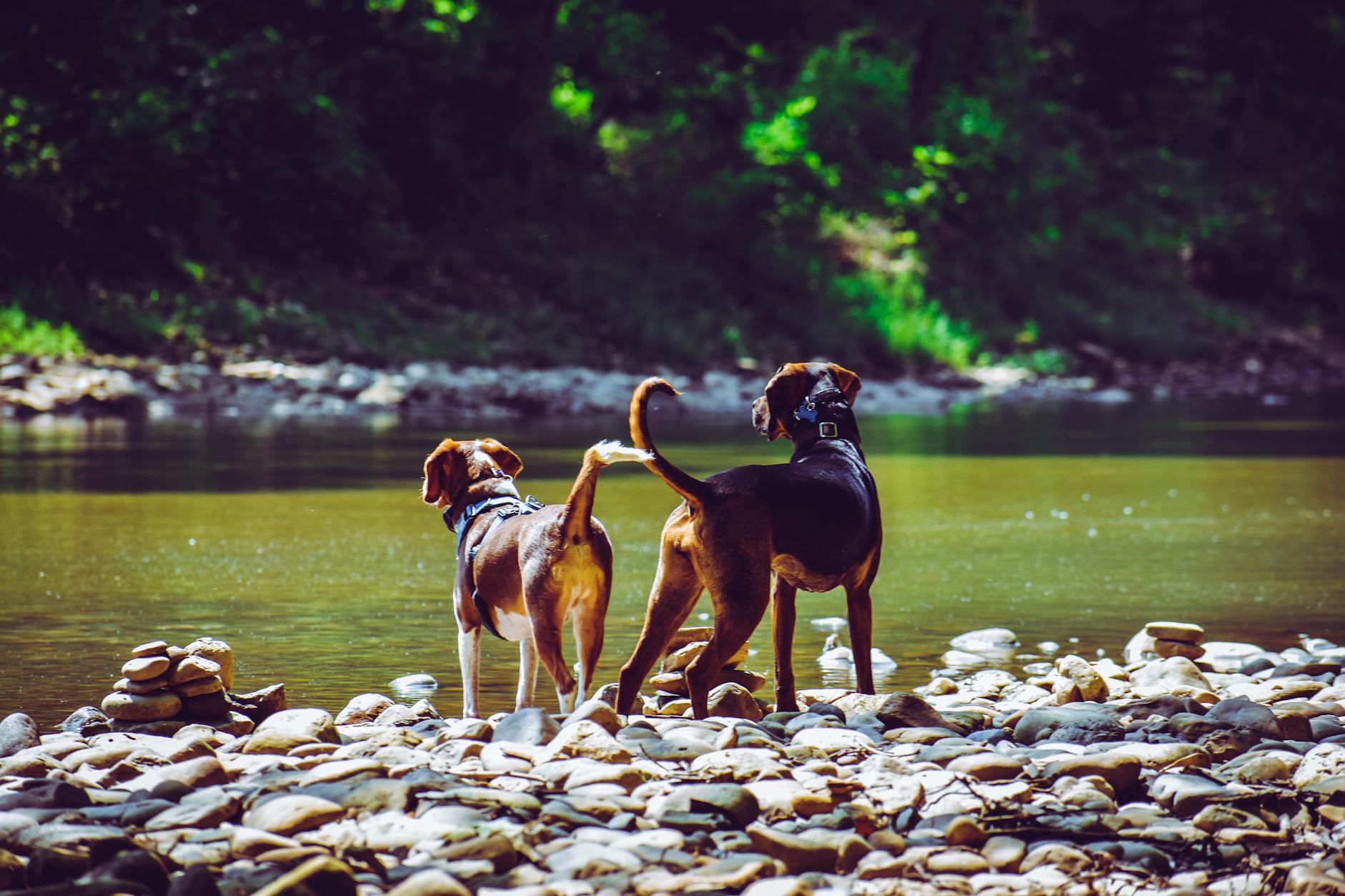Man’s Best Friend Enlists in the War Against a Destructive Invader
Canine Detectives Offer a New Frontier in Protecting Crops and Ecosystems from the Spotted Lanternfly
The fight against invasive species is a constant and often challenging battle for ecosystems and agricultural industries worldwide. Among the most formidable adversaries currently plaguing the eastern United States is the spotted lanternfly (Lycorma delicatula). This colorful yet destructive insect poses a significant threat to a wide range of plants, from grapevines and fruit trees to hardwood forests. While traditional methods of detection and eradication exist, a groundbreaking study from Virginia Tech is introducing a novel, and arguably more endearing, ally into the fray: dogs.
This innovative research highlights the remarkable olfactory capabilities of canines and their potential to revolutionize how we identify and manage the spread of this invasive pest. By leveraging a dog’s superior sense of smell, scientists are exploring a new frontier in early detection, a critical component in any successful pest management strategy. The ability to locate the lanternfly, particularly its egg masses which are often difficult to spot with the naked eye, could provide a crucial advantage in curbing its devastating impact.
This article delves into the Virginia Tech study, exploring the science behind canine detection, the broader context of the spotted lanternfly invasion, the practical implications of this research, and the potential future for man’s best friend in ecological conservation efforts.
Context & Background: The Persistent Threat of the Spotted Lanternfly
The spotted lanternfly, native to Asia, first made its appearance in the United States in 2014, detected in Berks County, Pennsylvania. Since then, it has spread with alarming speed across several states, including New Jersey, Delaware, Maryland, New York, and Virginia. The insect’s lifecycle and feeding habits make it particularly damaging.
Adult spotted lanternflies and their nymphs feed on the sap of a wide variety of plants, weakening them and making them more susceptible to disease and insect attacks. Their feeding process also excretes a sticky, sugary substance known as “honeydew,” which can lead to the growth of sooty mold. This mold covers plant surfaces, blocking sunlight and hindering photosynthesis, further stressing and damaging the host plant. The honeydew also attracts other insects and can negatively impact the aesthetic and economic value of affected plants.
Economically, the spotted lanternfly poses a severe threat to industries such as viticulture, as grapevines are a preferred food source. Orchards producing apples, peaches, and other fruits are also at risk. Beyond agriculture, the insect’s impact on forests is a growing concern. It can significantly damage trees like black walnut, maple, and oak, which are vital for timber production and the health of forest ecosystems. The cost of managing and mitigating the damage caused by this invasive species is substantial, impacting businesses and state and federal budgets.
Efforts to control the spotted lanternfly have historically relied on a combination of methods. These include chemical treatments, mechanical removal, and public awareness campaigns encouraging citizens to report sightings and destroy the insects and their egg masses. However, the sheer scale of the infestation and the difficulty in locating all life stages, especially the eggs, have presented significant challenges. Egg masses are typically laid on various surfaces, including tree trunks, rocks, vehicles, and outdoor furniture, making them elusive targets for manual inspection.
The need for more efficient and effective detection methods has been paramount. This is where the innovative approach of canine detection comes into play, offering a potential paradigm shift in the ongoing battle against this invasive pest.
In-Depth Analysis: Canine Olfaction and the Spotted Lanternfly
The scientific basis for using dogs in pest detection lies in their extraordinary sense of smell. While humans have approximately 5 million olfactory receptors, dogs can possess up to 300 million, depending on the breed. This vast difference in olfactory capacity allows dogs to detect scents at concentrations that are imperceptible to humans, often in parts per trillion. This remarkable ability has already been successfully applied in various fields, including drug detection, explosive detection, search and rescue, and even medical diagnostics for diseases like cancer and diabetes.
The Virginia Tech study, conducted by researchers at the university’s Department of Entomology and Plant Pathology, focused on training dogs to identify the scent of the spotted lanternfly, with a particular emphasis on its egg masses. The theory is that each life stage of the insect, and especially the protected egg masses, will emit a unique scent profile or “odor signature.” This signature is a complex mixture of volatile organic compounds (VOCs) released by the insect, its eggs, and potentially the surrounding materials where they are laid.
The training process for these detection dogs is rigorous and often involves a “search and alert” methodology. Dogs are conditioned to associate a specific scent with a reward, typically a favorite toy or treat. When they detect the target scent, they are trained to perform a specific alert behavior, such as sitting or pawing at the location, signaling the presence of the scent to their handler.
Dr. Sarah Miller, lead researcher on a similar project at a different institution exploring canine pest detection, explained the foundational principles: “The key is to isolate the target odor. In the case of the spotted lanternfly egg masses, we’re looking for specific VOCs that are released by the eggs themselves or by the substrate they are laid on. Dogs are incredibly adept at discriminating between different scent profiles, even in complex environments where there are many other competing odors.”
The Virginia Tech study likely involved presenting dogs with controlled samples of spotted lanternfly egg masses, potentially in various stages of development or on different surfaces, and rewarding them for identifying these samples. Over time, the dogs learn to reliably distinguish these specific scents from ambient odors.
The potential advantages of this method are significant. Dogs can cover ground much faster than human surveyors and can access areas that are difficult for people to reach. Their ability to detect scents through barriers or at a distance could also streamline the identification process. Furthermore, this method could be less disruptive to the environment compared to broad-scale chemical applications.
The success of this research could lead to the development of specialized canine units for agricultural and environmental agencies, augmenting existing surveillance and control efforts. These teams could be deployed to high-risk areas, nurseries, transportation hubs, and known infestation zones to conduct targeted searches for the elusive egg masses, allowing for more precise and timely interventions.
Further research would likely focus on the efficacy of dogs in different environmental conditions, such as varying temperatures and humidity levels, and their ability to differentiate between lanternfly egg masses and those of other insects. The specific breeds of dogs best suited for this task, often scent hounds or breeds known for their trainability and focus, would also be a crucial consideration.
Pros and Cons: Weighing the Canine Approach
The introduction of canine detection for the spotted lanternfly presents a compelling array of potential benefits, but it is also important to consider the practical limitations and challenges inherent in any new methodology.
Pros:
- Enhanced Detection Sensitivity: Dogs possess an olfactory capacity far superior to humans, allowing them to detect lanternfly egg masses even when they are subtly hidden or in low concentrations.
- Speed and Efficiency: Canine detection teams can survey large areas more quickly than traditional visual surveys, potentially identifying infestations earlier and more comprehensively.
- Early Intervention: Locating egg masses is crucial for effective control, as removing them before they hatch significantly prevents new generations of the destructive insect. Dogs can greatly improve the success rate of this critical step.
- Environmental Friendliness: Compared to widespread chemical spraying, canine detection is a non-chemical method that minimizes environmental impact and potential harm to beneficial insects and other wildlife.
- Cost-Effectiveness (Potential): While initial training and deployment have costs, the efficiency gains and improved early detection could lead to significant long-term cost savings in pest management by preventing larger, more expensive infestations.
- Public Engagement and Awareness: The novelty of using dogs can also serve as a powerful tool for public education and engagement, increasing awareness about the spotted lanternfly and encouraging community participation in reporting and control efforts.
- Versatility: Dogs can be trained to detect a variety of target scents, suggesting that the same canine teams could potentially be utilized for other invasive species or agricultural pests in the future.
Cons:
- Training and Maintenance Costs: Developing highly proficient detection dogs requires significant investment in specialized training, ongoing maintenance, and the expertise of professional dog trainers and handlers.
- Handler Dependence: The effectiveness of a detection dog is heavily reliant on the skill and training of its handler. A well-trained handler is crucial for interpreting the dog’s alerts accurately and managing the team effectively.
- Environmental Limitations: Extreme weather conditions, strong prevailing winds, or the presence of overwhelming competing scents in certain environments could potentially reduce a dog’s detection efficacy or lead to false alerts.
- Dog Welfare and Fatigue: Detection work is physically and mentally demanding for dogs. Proper scheduling, rest, and welfare considerations are essential to prevent burnout and maintain performance.
- Limited Scope of Detection: While dogs are excellent at detecting specific scents, they are primarily detecting the egg masses or adults. They are not a solution for eradicating the pest once it has established itself in large numbers.
- Breed and Individual Variation: Not all breeds are equally suited for detection work, and even within suitable breeds, individual dogs will have varying aptitudes and trainability.
- Public Perception and Acceptance: While generally positive, there might be isolated instances of public concern or resistance to the use of detection dogs in certain areas, requiring clear communication and education.
The balance of pros and cons suggests that while canine detection is a promising addition to the pest management arsenal, it is best viewed as a complementary tool rather than a standalone solution. Its strengths lie in its precision and early detection capabilities, making it a valuable asset when integrated with existing strategies.
Key Takeaways
- The spotted lanternfly is a destructive invasive insect that poses a significant threat to agriculture and ecosystems in the eastern United States.
- Effective control relies heavily on early detection, particularly of the insect’s egg masses, which are often difficult to locate visually.
- A study from Virginia Tech is exploring the use of trained dogs to detect the scent of spotted lanternfly egg masses, leveraging their superior olfactory capabilities.
- Dogs have proven effective in detecting various scents in diverse fields, suggesting their potential for pest detection.
- Canine detection offers advantages such as increased sensitivity, speed, efficiency, and an environmentally friendly approach compared to traditional methods.
- Potential challenges include training and maintenance costs, handler dependency, environmental limitations, and dog welfare considerations.
- This innovative method is likely to be most effective when integrated with existing pest management strategies.
- The research opens avenues for specialized canine units to aid in ecological conservation and agricultural protection efforts.
Future Outlook: Expanding the Canine Guard
The success of the Virginia Tech study holds significant promise for the future of invasive species management. If validated and scaled, canine detection could become a standard component of state and federal pest surveillance programs. Imagine specialized K9 units, akin to those used for bomb or drug detection, being deployed to identify not only the spotted lanternfly but potentially other agricultural pests and diseases that emit distinct scent signatures.
This research also opens doors for further scientific inquiry. Future studies could focus on refining training protocols, identifying optimal canine breeds for specific tasks, and developing standardized assessment methods to ensure the consistent reliability of detection dogs. The chemical compounds responsible for the spotted lanternfly’s egg mass scent could also be identified and synthesized, potentially leading to the development of artificial lures or non-living scent detection devices, though the dynamic and nuanced nature of a living dog’s detection abilities may be difficult to replicate entirely.
Furthermore, this approach aligns with a growing trend towards more sustainable and less chemically intensive pest management practices. As environmental concerns continue to rise, methods that reduce reliance on broad-spectrum pesticides while maintaining effectiveness will be increasingly sought after. Canine detection offers a promising path in this direction.
The integration of these highly specialized animal assets could also lead to more proactive and preventative strategies. By identifying and eradicating small, nascent infestations before they become widespread, the economic and ecological damage can be significantly minimized. This shift from reactive to proactive management is a critical goal for any long-term pest control strategy.
The potential for cross-disciplinary collaboration is also immense. Entomologists, canine behaviorists, and animal trainers can work together to optimize the deployment and efficacy of these canine detection teams. Public-private partnerships could emerge to fund and manage these specialized units, ensuring their availability for critical missions across affected regions.
The future could see these furry sentinels patrolling vineyards, orchards, nurseries, and natural parks, providing an invisible but highly effective layer of defense against the relentless march of invasive species like the spotted lanternfly. This is not just about catching a pest; it’s about harnessing an age-old partnership between humans and animals to address modern environmental challenges.
Call to Action
The groundbreaking research into canine detection of the spotted lanternfly highlights a critical need for continued support and investment in innovative pest management strategies. Here’s how you can contribute and stay informed:
- Support Research and Funding: Advocate for increased funding for agricultural and environmental research institutions like Virginia Tech that are at the forefront of developing novel solutions to combat invasive species. Stay informed about legislative efforts and support initiatives that prioritize scientific research.
- Stay Vigilant and Report Sightings: Even with advanced detection methods, public vigilance remains crucial. If you are in an area affected by the spotted lanternfly, familiarize yourself with its appearance and report any sightings, especially of egg masses, to your local or state agricultural extension office. The Virginia Department of Agriculture and Consumer Services provides extensive resources and reporting mechanisms.
- Educate Yourself and Others: Learn about the spotted lanternfly and its impact. Share this information with your friends, family, and community. Increased public awareness is a powerful tool in controlling the spread of invasive species. Resources are available from organizations such as the USDA Animal and Plant Health Inspection Service (APHIS).
- Practice Responsible Travel: If you travel to or from infested areas, inspect your vehicles, outdoor equipment, and personal belongings for spotted lanternflies or their egg masses before moving them. This simple step can prevent the accidental spread of the pest to new locations.
- Support Local Agricultural Initiatives: Where possible, support local farmers and businesses that are working to combat the spotted lanternfly and protect our agricultural heritage.
By working together, informed by scientific advancements and driven by collective action, we can effectively mitigate the threat posed by the spotted lanternfly and protect our natural resources for future generations.








